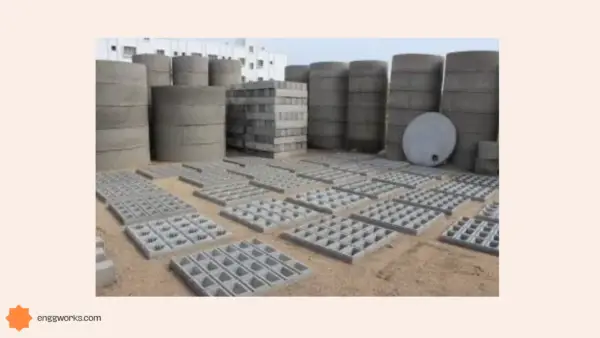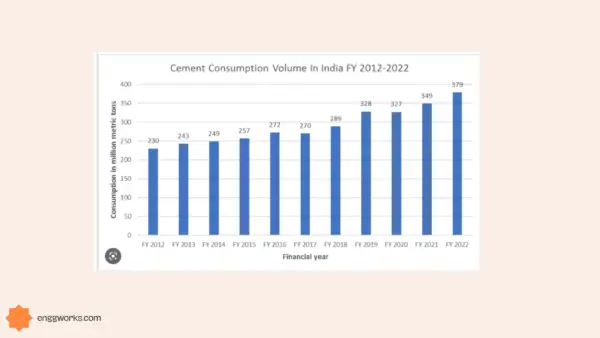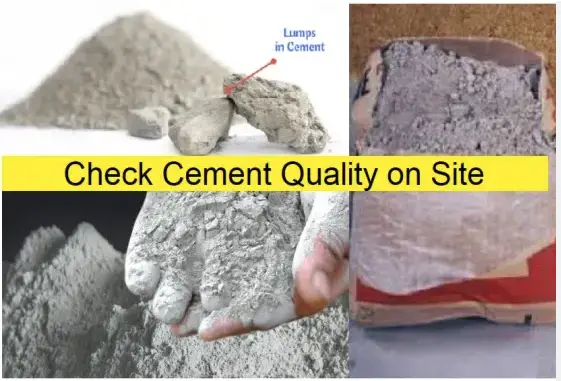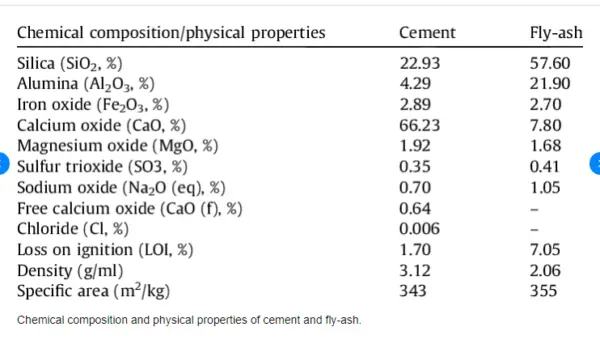If you are working on a construction project, you might have encountered different types of cement.
Cement is a binding material that holds concrete, mortar, and other building materials together. But not all cement is the same. Depending on the composition, properties, and uses, there are different types of cement that you should know about.
In this blog post, we will introduce you to 24 types of cement and their common uses in construction. We will also explain how they are made and what makes them different from each other.
24 types of cement
Ordinary Portland cement (OPC):
This is the most common type of cement used for general concrete construction. It is made by grinding limestone and clay together and heating them in a kiln. It has good strength and durability and can be used for all kinds of structures.
This sort of cement is the most typical and fundamental kind of cement. It is created by kiln-heating clay and limestone, then powdering the clinker that results.The IS code provisions for different grades of ordinary portland cement are given below:
(i) Ordinary Portland Cement 33 Grade– IS 269: 1989
(ii) Ordinary Portland Cement 43 Grade– IS 8112: 1989
(iii) Ordinary Portland Cement 53 Grade– IS 12269: 1987
Portland pozzolana cement (PPC):
This is a type of cement that contains pozzolanic materials, such as fly ash, volcanic ash, or silica fume, which react with water and calcium hydroxide from OPC to form additional cementitious compounds. This improves the strength, durability, and resistance to chemical attacks of concrete. It is used for marine structures, dams, bridges, and mass concrete works.

OPC is combined with pozzolanic components like fly ash, volcanic ash, or silica fume to create this form of cement. This produces cement that is stronger and more resistant to chemicals. The IS code provisions for different types of PPC are given below:
(i) Portland Pozzolana cement (Fly ash based) IS:1489 Part-1
(ii) Portland Pozzolana cement ( Calcined based) IS:1489 Part -2
Rapid-hardening cement (IS 8041:1980):
This is a type of cement that gains strength faster than OPC. It is made by increasing the amount of tricalcium silicate (C3S) and grinding the clinker finer. It is used for prefabricated concrete elements, road works, and repair works.
When quick setting and hardening are necessary, this type of cement is employed. It is created by boosting the calcium chloride content of the OPC mixture. Initial and final setting times of this cement are the same as those of the ordinary cement. But it attains higher strength in early days.
Extra-rapid-hardening cement:
This is a type of cement that gains strength even faster than rapid-hardening cement. It is made by adding calcium chloride or aluminium sulfate to the clinker during grinding. It is used for cold weather concreting, emergency repairs, and fast-track projects.
Quick-setting cement:
This is a type of cement that sets quickly but does not gain strength rapidly. It is made by adding a small amount of aluminum sulfate to the clinker during grinding. It is used for underwater concreting, grouting, and plugging.
Low-heat cement:
This is a type of cement that produces less heat during hydration than OPC. It is made by reducing the amount of C3S and C3A and increasing the amount of C2S and C4AF in the clinker. It is used for mass concrete works, such as dams and foundations, where thermal cracking may occur due to high heat generation.
Sulfate-resisting cement:
This is a type of cement that resists sulfate attacks from soil or water. It is made by lowering the amount of C3A and C4AF in the clinker. It is used for structures exposed to sulfate-rich environments, such as sewers, pipelines, and coastal areas.
Blast furnace slag cement:
This is a type of cement that contains blast furnace slag, which is a by-product of iron production. Blast furnace slag has hydraulic properties similar to pozzolana and can replace up to 70% of OPC in the cement.
It improves the workability, durability, and resistance to chemical attacks of concrete. It is used for structures in aggressive environments, such as marine works, industrial waste disposal sites, and nuclear power plants.

High alumina cement:
This is a type of cement that contains a high amount of alumina (Al2O3) in the clinker. It is made by fusing limestone and bauxite together at high temperatures.
It has high early strength and resistance to high temperatures and chemical attacks. It is used for refractory works, such as furnaces, kilns, and incinerators.
White cement:
This is a type of cement that has a white color instead of the usual gray color of OPC. It is made by using pure limestone and china clay as raw materials and avoiding iron oxide and manganese oxide in the clinker.
It has similar properties to OPC but has a higher cost due to its aesthetic appeal. It is used for decorative works, such as tiles, terrazzo, mosaic, and plastering.
This kind of cement is employed in construction projects when a beautiful appearance is desired. It is created by using raw materials that are low in iron and magnesium.
Colored cement:
This is a type of cement that has different colors depending on the pigments added to it during grinding.
The pigments can be natural or synthetic and can produce various shades of red, yellow, green, blue, or black. Colored cement has similar properties to OPC but has a higher cost due to its aesthetic appeal. It is used for architectural works, such as pavements, walls.
This kind of cement is utilized to create coloured mortar or concrete. To get the required hue, pigments are added to the OPC mixture.
Oil well cement (IS 8229:1986)
This form of cement is utilized in the oil and gas industry for cementing wells. It is created by adding accelerators and retarders to the OPC mixture.
Hydrophobic Cement (IS 8043:1991)
When concrete is expected to come into contact with water or in places with high rainfall, this type of cement is utilized. It is created by mixing OPC with compounds that repel water.
Low heat Cement ( IS 12600: 1989)
In large concrete buildings like dams and foundations, where the heat produced during the setting process can lead to cracking, this type of cement is employed. The amount of tri-calcium aluminate (C3A) in the OPC mixture is decreased to create it.
High Alumina Cement ( IS 6452: 1989)
Instead of heating the two minerals separately, this sort of cement is created by fusing bauxite and limestone in a kiln. It is resistant to chemical attacks because of the significant amount of alumina in it.
Expansive Cement
In order to account for shrinkage in concrete, this kind of cement is employed. It is created by mixing OPC with an expanding agent.

Sulphate resisting Cement (IS 12330: 1988)
This kind of cement is utilized where there are large concentrations of sulphates in the soil or water since these sulphates can react with the cement and cause it to decay. It is created by lowering the proportion of C3A and including sulfate-resistance ingredients in the OPC mixture.
Masonry Cement ( IS 3466: 1988)
For masonry work, this kind of cement is used in mortar. To increase workability and durability, it combines OPC with ground limestone or another ingredient.
High early strength Cement
When concrete needs to fast reach its maximum strength, such as in precast concrete or during cold weather, this kind of cement is employed. It is created by adding more C3S to the OPC mixture.
Air entraining Cement
When freeze-thaw resistance is required, such as in cold locations, this kind of cement is employed. To make it, air-entraining chemicals are mixed into the OPC mixture, resulting in minute air bubbles in the finished product.
Quick setting Cement
This kind of cement hardens quickly and is utilized when building must happen quickly, like when repairing roads. It is created by sprinkling a tiny amount of aluminium sulphate into the OPC mixture.
Portland slag Cement (IS 455: 1989)
PSC is frequently employed in building projects, including those involving the construction of roads, bridges, buildings, and dams. Moreover, it is utilized in the production of precast concrete pavers, blocks, and pipes.
Blast furnace slag that has been crushed into small granules and Portland cement clinker are combined to create Portland slag cement.
Super sulphated Cement( IS 6909: 1990)
SSC is more suited for large-scale concrete installations, like those involved in dam construction, because it has a lower heat of hydration and a slower setting period than regular Portland cement (OPC).
Due to the availability of other forms of cement that have comparable qualities, such as Portland slag cement (PSC) and Portland pozzolana cement, SSC is not frequently utilized in current building (PPC).
In order to create super sulphated cement, Portland cement clinker is often treated with more calcium sulphate than is typically used to create regular Portland cement.







